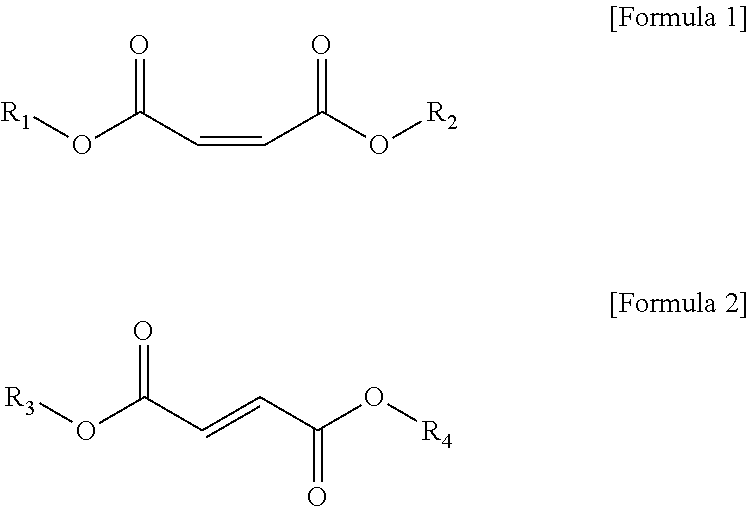Vinyl chloride-based copolymer, method for preparing the same, and thermoplastic resin composition containing the same
a technology of vinyl chloride and copolymer, which is applied in the field of vinyl chloride-based copolymer, can solve the problems of reducing polymerization reaction time, reducing polymerization efficiency, and deteriorating melting characteristics, so as to improve plasticity and processability, structure stability and processability, and easy preparation
- Summary
- Abstract
- Description
- Claims
- Application Information
AI Technical Summary
Benefits of technology
Problems solved by technology
Method used
Image
Examples
example 1
[0094]390 kg of deionized water was added to a reactor having an internal volume of 1 m3 and equipped with a reflux condenser, and 160 g of polyvinyl alcohol having a degree of hydration of 80.5%, 120 g of polyvinyl alcohol having a degree of hydration of 42.3%, 50 g of hydroxypropylmethyl cellulose were added to the reactor, and then, 300 kg of a vinyl chloride monomer was added thereto. After that, 60 g of di-2-ethylhexyl peroxydicarbonate, 150 g of t-butyl peroxyneodecanoate, and 2100 g of poly(N-vinylpiperidone) were added to initiate a reaction. When the polymerization conversion rate was 20%, the addition of a mixture of dihexyl maleate and dihexyl fumarate was started and the addition was ended when the polymerization conversion rate was 35%. The mixture added was 75 kg in total and a weight ratio of the dihexyl maleate and the dihexyl fumarate in the mixture was 9:1. In order to achieve a goal of an average degree of polymerization of 1,000, the reaction temperature was main...
example 2
[0095]A vinyl chloride-based copolymer was obtained by the same method described in Example 1 except for adding 900 g of poly(N-vinyl piperidone) when the polymerization conversion rate was 40%.
example 3
[0096]A vinyl chloride-based copolymer was obtained by the same method described in Example 1 except for adding 150 g of poly(N-vinyl piperidone) when the polymerization conversion rate was 70%.
PUM
| Property | Measurement | Unit |
|---|---|---|
| wt % | aaaaa | aaaaa |
| wt % | aaaaa | aaaaa |
| wt % | aaaaa | aaaaa |
Abstract
Description
Claims
Application Information
 Login to View More
Login to View More - R&D
- Intellectual Property
- Life Sciences
- Materials
- Tech Scout
- Unparalleled Data Quality
- Higher Quality Content
- 60% Fewer Hallucinations
Browse by: Latest US Patents, China's latest patents, Technical Efficacy Thesaurus, Application Domain, Technology Topic, Popular Technical Reports.
© 2025 PatSnap. All rights reserved.Legal|Privacy policy|Modern Slavery Act Transparency Statement|Sitemap|About US| Contact US: help@patsnap.com



